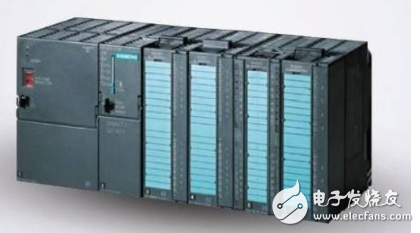PLC systems are known for their versatility, ease of use, wide adaptability, high reliability, strong anti-interference capability, and simple programming. It is expected that the application of PLC control technology will become a global trend in the field of industrial automation. Today, we’ll take a closer look at common faults and maintenance techniques for industrial PLCs.
**01 CPU Exception:**
When the CPU triggers an error, first check all internal bus connections. To identify the faulty unit, replace each component one by one until the issue is resolved. This approach helps isolate the problem and allows for targeted repairs.
**02 Memory Exception:**
If the memory is malfunctioning, reprogramming the system may help reproduce the fault. If the issue persists, it could be due to noise interference or a defective memory module. In such cases, replacing the memory is usually necessary.
**03 Input/Output Unit Error or Expansion Unit Fault:**
When an alarm occurs, start by checking the insertion status of the I/O and expansion units, as well as the cable connections. Once the faulty unit is identified, it should be replaced promptly to restore normal operation.

**04 Program Not Executing:**
To troubleshoot this, follow the input → program execution → output process. Check the input LED indicators or use a programmer’s monitor to verify if signals are being received. If the LED is off, there may be an issue with the external input system. If the LED is on but no signal is detected, the problem might lie in the I/O unit, CPU, or expansion unit.
For program execution, use the programmer’s monitor to compare the ladder logic with actual results. Discrepancies may indicate a programming error or hardware failure.
For output checks, observe the output LED. If the LED shows an error while the system functions correctly, the CPU or I/O interface may be at fault. If the LED is on but no output is generated, the output unit or load system could be the cause.
Keep in mind that different PLC models may have varying LED configurations, so the fault identification process can vary accordingly.
**05 Some Programs Not Executed:**
This issue is similar to the previous one. However, if the input time for counters or step controllers is too short, the system may not respond properly. In such cases, ensure that the input time is sufficient, ideally greater than the maximum response time of the input unit plus twice the scan time.
**06 Short Power Outage Causes Program Loss:**
Besides checking the battery, you should also test the power cycling of the PLC. The PLC has a built-in circuit to save the program during reset, but if this fails, the program may be lost. Additionally, if the battery alarm still appears after replacement, it could indicate a memory leakage or abnormal external circuit. Also, check for noise interference from the machine system, which often coincides with power fluctuations.
**07 PROM Not Working:**
First, check if the PROM is properly inserted. If the issue persists, the chip may need to be replaced.
**08 System Stops After Power-On or Reset:**
This could be caused by noise interference or poor internal contact. Gently tapping the PLC body can help identify loose connections. Also, check the cable and connector insertions to ensure they are secure.
**09 Inverter Interference with PLC Analog Signals:**
In modern control systems, inverters are widely used, and their interference with PLC analog signals is a common issue. For example, when a Siemens PLC sends a 4–20mA signal to a Siemens inverter, the inverter may fail to start.
**Fault Diagnosis:**
1. Initially suspected the analog output board, but measuring the signal showed it was normal.
2. Replaced the inverter, but the problem remained.
3. Used a hand-held signal transmitter to send a standard 4–20mA signal directly to the inverter, which worked. This ruled out the output board and inverter.
4. Concluded that the inverter was causing interference.
5. Installed a signal isolation module (TA3012) between the PLC and the inverter. After connecting the module, the inverter operated normally.
6. Confirmed that the issue was due to inverter interference.
Many engineers face this challenge during system debugging. Here are some key tips to prevent such interference:
1. Use separate power supplies for the PLC and the inverter, and consider an isolation transformer for the PLC.
2. Keep power lines and signal lines apart, and use shielded cables for signal transmission.
3. Always use signal isolation modules for both analog input and output channels.
4. Implement software filters in the PLC program to reduce noise.
5. Design separate ground connections for signals and power to minimize interference.
By following these five steps, you can effectively prevent inverter interference and ensure stable PLC performance.
Connector 2.00Mm Pitch,Ph Connector Accessories,Ph Connectors Accessories,Strip Wire Connectors
YUEQING WEIMAI ELECTRONICS CO.,LTD , https://www.wmconnector.com